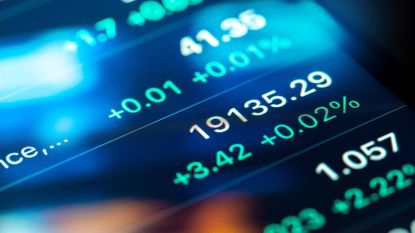Six months into 2023, S&P 500 companies are operating differently than they did a year prior.
As companies adjust their business plans to keep up with the economy, they spend more in some places while cutting drastically in others. To help you understand what is going on and what we expect to happen in the future, our highly-experienced Kiplinger Letter team will keep you abreast of the latest developments and forecasts (Get a free issue of The Kiplinger Letter or subscribe). You’ll get all the latest news first by subscribing, but we will publish many (but not all) of the forecasts a few days afterward online. Here’s the latest…
The use of cash by S&P 500 companies will fall in 2023 after growing by 8% in 2022. The recent slowdown in earnings growth and the decline in cash balances will likely lead to a 2% drop in cash spending this year. S&P 500 companies are also unlikely to raise cash, as the cost of capital has risen sharply. Despite overall declines, firms are likely to up their spending of cash on research and development projects and shareholder dividends. Buybacks are expected to fall by as much as 15% this year before rebounding in 2024. Buybacks increased in the first quarter but at a slower pace than in 2022. A handful of firms were the biggest buyers of their own shares, including Apple (AAPL). Energy companies will lead the S&P 500 in share buybacks, followed closely by telecom firms.
Subscribe to Kiplinger’s Personal Finance Be a smarter, better informed investor.
Save up to 74%
Sign up for Kiplinger’s Free E-Newsletters Profit and prosper with the best of expert advice on investing, taxes, retirement, personal finance and more – straight to your e-mail.
Profit and prosper with the best of expert advice – straight to your e-mail.
By contrast, companies in the financial, health care, utilities and real estate sectors will pull back spending on buybacks to increase capital buffers. Buybacks could face headwinds from a new excise tax and new regulations. The Inflation Reduction Act included a 1% excise tax on buybacks. Meanwhile, the Securities and Exchange Commission (SEC) has OK’d a rule requiring publicly traded firms to disclose more information on their buybacks, including the average share price paid.
This forecast first appeared in The Kiplinger Letter, which has been running since 1923 and is a collection of concise weekly forecasts on business and economic trends, as well as what to expect from Washington, to help you understand what’s coming up to make the most of your investments and your money. Subscribe to The Kiplinger Letter.
Read moreWhat the Markets’ New Tailwinds Could Look Like in 2023Stocks With the Highest Dividend Yields in the S&P 500
